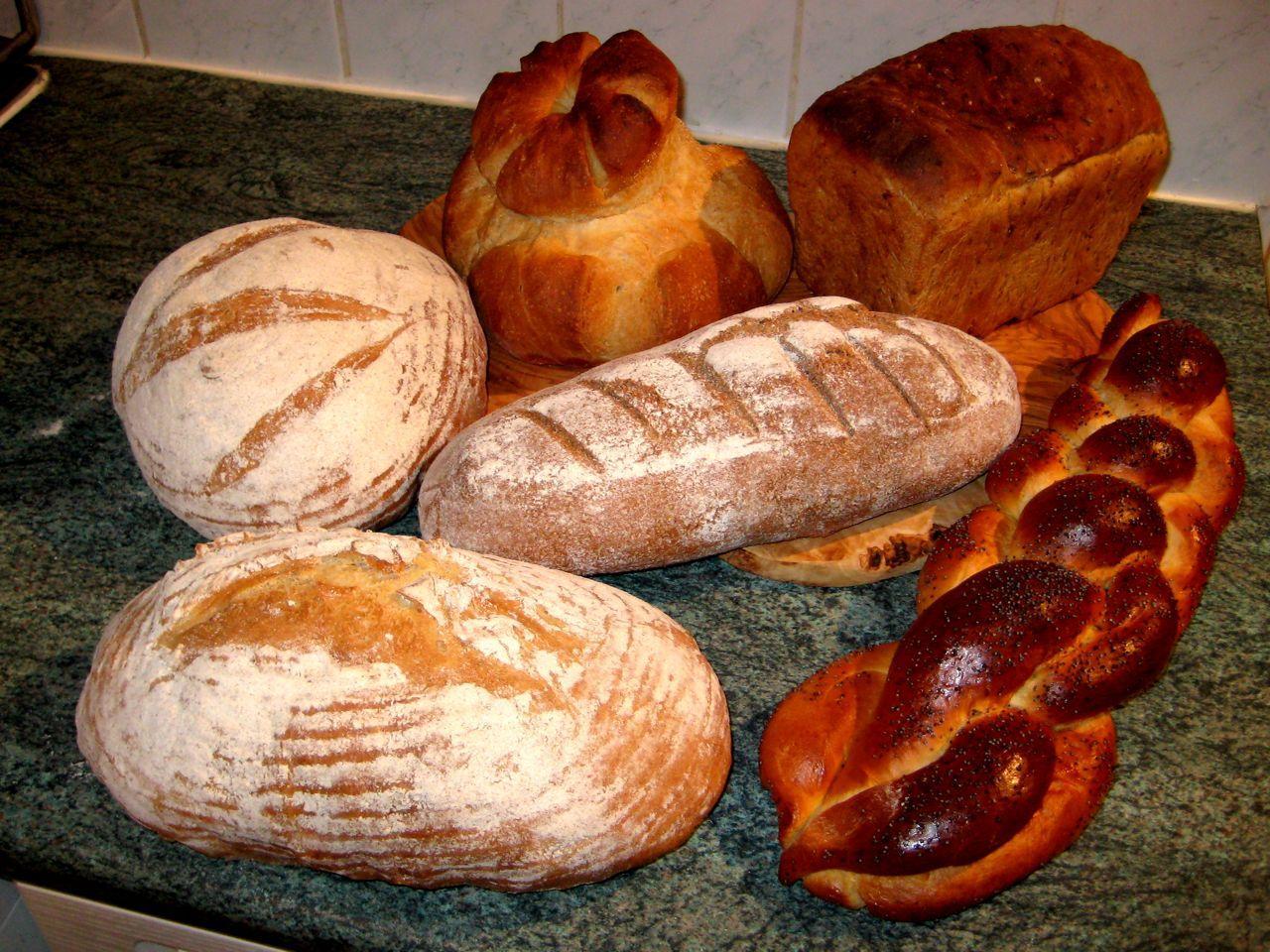
Although rice makes up the main meals of most Filipinos, bread in its many forms still make up a portion of our diet as Filipinos enjoy nibbling on all things soft, sweet and sugary. Although baking bread has not been a native concept and was brought over by Europeans and our other neighbors, throughout the years, Filipinos have come to love eating bread. Local bakers, adjusting to the tastes of their clientele and even creating different breads of their own, have helped create a whole line of unique treats that are Filipino in their own way and have been enjoyed by many generations.
One need not walk far from one's home to sample and enjoy these unique Filipino treats. Small local bake shops, more commonly known as "panaderia" or "panaderya," are easy to find in most neighborhoods. Although they are most sought-after in the mornings for pandesal or breakfast breads like sliced bread, these small bakeries are open throughout the day, selling bread as snacks, desserts, or "pasalubong," as these bakeries are filled with a variety of treats that are enticing as they are tasty.
The following are ten Filipino breads that are consistently eaten, enjoyed and sought after by generations of our countrymen, and the best thing is they don't really cost much. They are eaten as they are, or are slathered with even more "palaman" like coco jam, margarine, or condensed milk, or are enjoyed through the peculiar Filipino habit of dunking them in accompanying coffee or soft drink.
Pandesal

From the Spanish pan de sal, which literally means "salt bread," is a bread roll made of flour, eggs, yeast, sugar, and salt. It has become a common food item in the Philippines. Pandesal is the most popular yeast-raised bread in the Philippines. Individual loaves are shaped like garrison caps due to its unique method of forming. The dough is rolled into long logs (bastón) which are rolled in fine bread crumbs. These are then cut into portions with a dull dough cutter, are allowed to rise on sheet pans and baked. Its taste and texture closely resemble those of the Puerto Rican bread pan de agua and Mexican bolillos. These breads all use a lean type of dough and follow similar techniques learnt from Spaniards or Spanish-trained bakers early in their history. As with most commercially-produced food items, pan de sal vary in quality to meet the taste requirements and economic standards of various communities.
Despite the Spanish origins of its name, pandesal was introduced in the Philippines in the 16th century. Pandesal originally started out as a plain roll, traditionally served for breakfast and accompanied by butter, cheese, scrambled eggs or filled omelettes, sausages, bacon, Spanish sardines, jams, jellies and marmalade, coffee, tea or hot chocolate. Originally, pandesal was similar to the French baguette as the only ingredients needed were hard wheat flour, water, yeast and salt. Later on, the quality of available wheat flour could no longer produce the ideal crusty exterior and chewy interior, and thus pandesal gradually became sweeter and richer. The remaining commonality between the earlier lean pandesal and the modern version is the coating of bread crumbs, giving its identifying flavour.
Pandesal can be made from any type of dough and still resemble pandesal as long as the dough is rolled in fine breadcrumbs before baking. The softness of the newer type of pandesal—which consumers unaware of the proper texture now find desirable—is due to a weak dough structure derived from inferior quality flour.
Ensaymada

Ensaymada, which is derived from the Spanish ensaimada, is a pastry made using butter and often topped with sugar and shredded cheese. In the Philippines, a Spanish colony for over 300 years, the Majorcan ensaïmada (commonly spelled ensaymada in Tagalog and Cebuano) has evolved over the centuries and is perhaps one the most common delicacies in that country. The ensaymada is a brioche made with butter instead of lard, and topped with grated cheese (usually aged Edam, known locally as keso de bola) and sugar. Upscale versions of ensaymada are also topped with butter cream and sugar. It is extremely popular throughout the islands, especially during the Christmas season, when it is often, although not always, eaten with hot chocolate. It is sometimes made with fillings such as ube (purple yam) and macapuno (a variety of coconut the meat of which is often cut into strings, sweetened, preserved, and served in desserts).
Pan de Coco

Also commonly sold in Filipino bakeries is pan de coco, a sweet roll filled with shredded coconut mixed with molasses. It is also called pancho in some places in the Philippines. It apparently gets its name from its filling, and is best enjoyed when hot off the oven when the filling is warm, moist and sweet. Pan de coco comes in many shapes and sizes but the filling remains the same. It is a common fare for merienda, on its own or with a warm drink.
Spanish Bread
Spanish bread refers to a rolled pastry which looks like a croissant prior to being given a crescent shape, and has a filling consisting of sugar and butter. Most varieties are made from the same dough from pandesal or are infused with more butter to make it appear more yellow. Although it is rare to get one hot off the stove, it still remains a popular merienda for most Filipinos because of its inherent chewiness and sweetness.
Kababayan

A familiar sight in the display cases of most local bakeries is the Kababayan, a small, sweet gong-shaped muffin that has a moist consistency. Although the most common form would come as a small yellow treat, different bakeries have made their own varieties on the color, design and flavor. They now come in chocolate, marbled, ube and even pandan. Filipinos enjoy them because of their softness and chewyness during merienda with drinks and it's so good that one piece is never enough.
Monay

Monay is a mainstay of the typical Filipino panaderya as this bread offers a filling meal for its patrons. It is normally a soft bread alhough it can be found with different consistencies and hardness. The size varies but is usually larger than most breads in the bakery. The color ranges from yellow to pale light brown. The standard form features a cut in the middle although nowadays this is no longer the case. The taste is bland to slightly sweet. It can be eaten on its own but is usually eaten with palaman like coco jam, margarine or cheese spread.
Putok
Putok, which literally means "explode," refers to a small, hard bread roll whose cratered surface is glazed with sugar. It is normally made from the same dough as the monay, but is made to be more compact with a much softer interior. The size varies but is often smaller than other breads. The color ranges from yellow to pale light brown. The taste is bland to slightly sweet. It is popular for folks who are looking for a quick, filling meal.
Cheese Bread
Although different bakeries have different interpretations of what a cheese bread should look like given the name, the common cheese bread found in local bakeries would take the form of a yellowish bread similar in consistency to pandesal. It is covered in cheese powder or granules, sometimes melted with the bread, or sometimes sprinkled after the cooking process. The inside is soft and chewey, sometimes with some cheese inside as well. Some variations have cheese within the though. Some look like small, normal rolls on the outside but have a portion of cheese inside. Most agree that they are best eaten hot off the oven.
Kalihim

This panaderya treat has a striking appearance because of itsa bright red filling. Kalihim is a soft bread roll with a red pudding filling, although there are varieties of different colors or flavors like ube, pineapple, and pandan. It is a nice, sweet filling bread enjoyed as a quick snack. It can be found all over the Philippines and is given the strangest names, like pan de regla, lipstick or floorwax, among others.
Mamon

Mamon is a soft, fluffy, chiffon-like bread that takes many forms, but normally shaped like small or wide cupcakes. They are often found sprinkled with cheese or sugar. The mamon is synonymous with soft, or softness, and it is this treat that Filipinos remember while growing up as an enjoyable treat during merienda.










